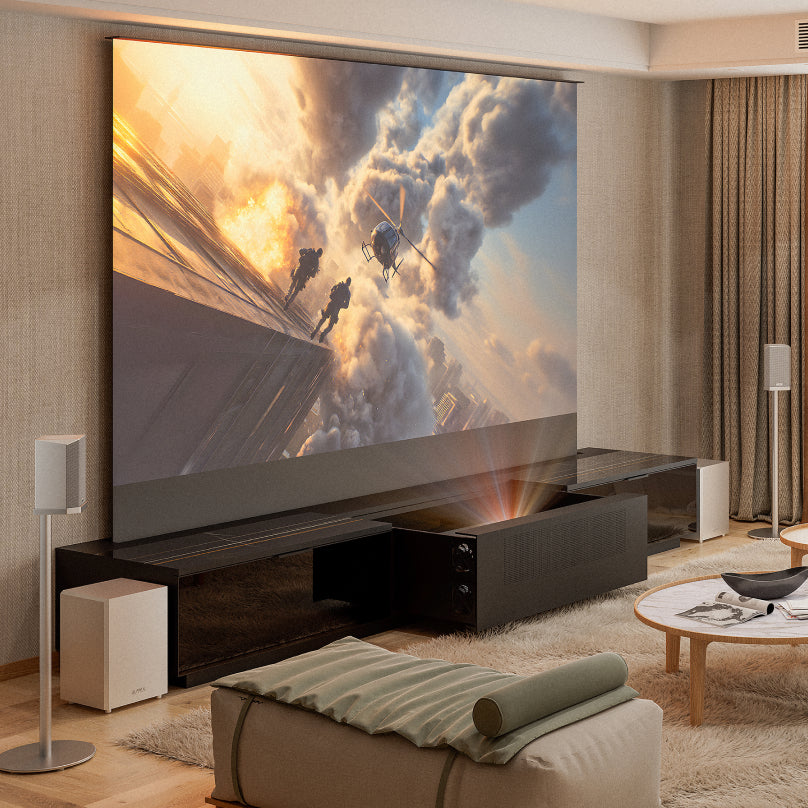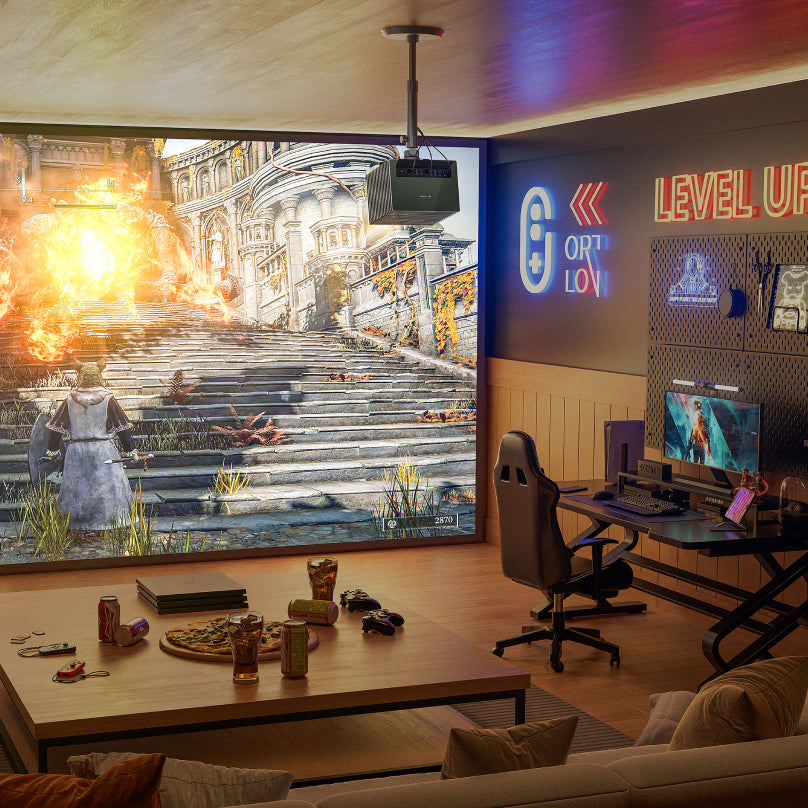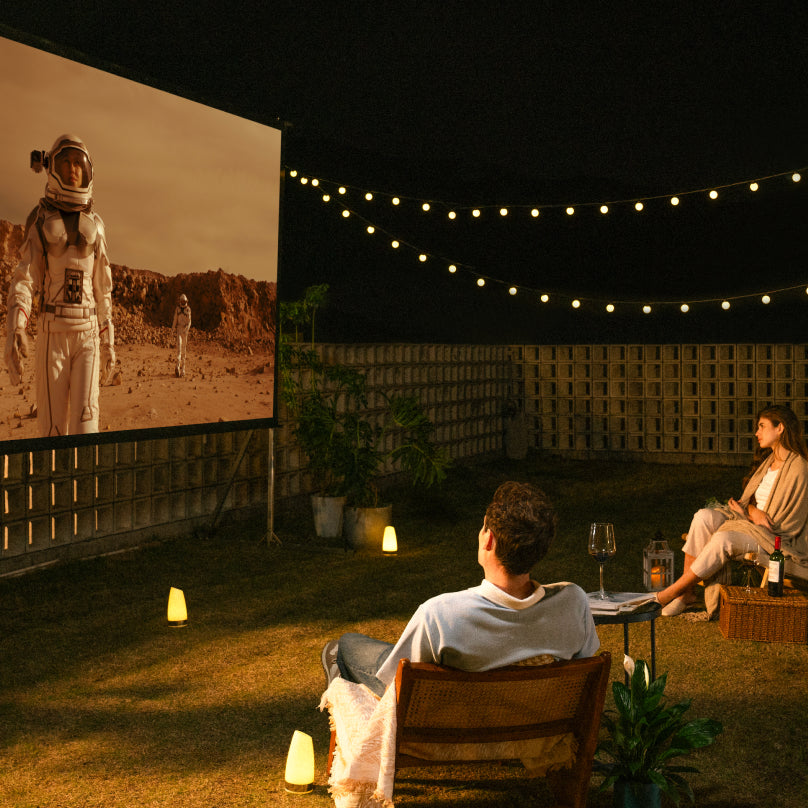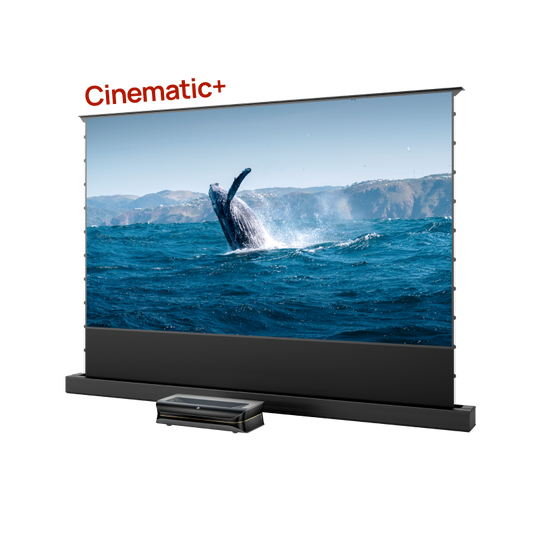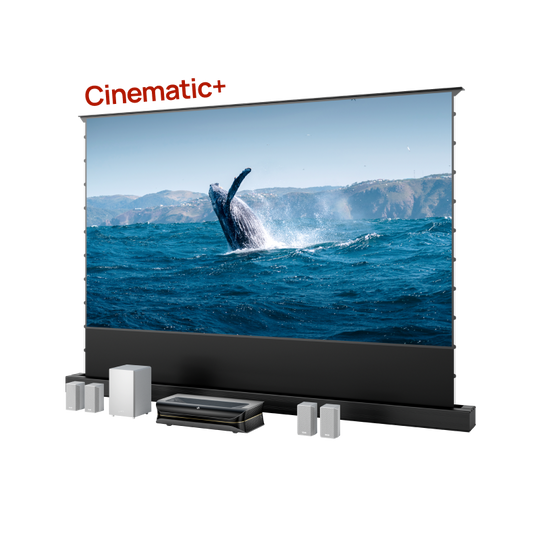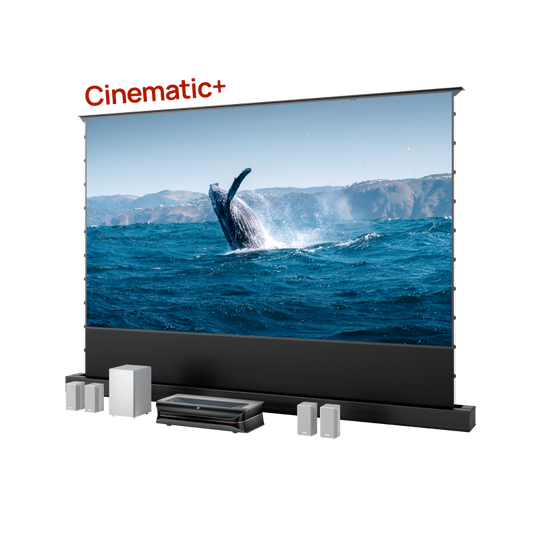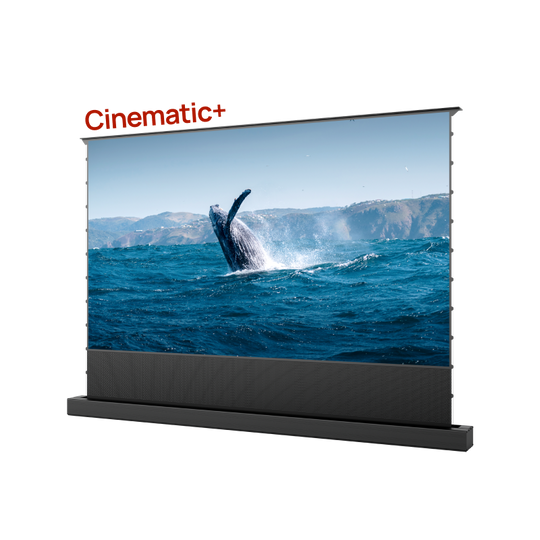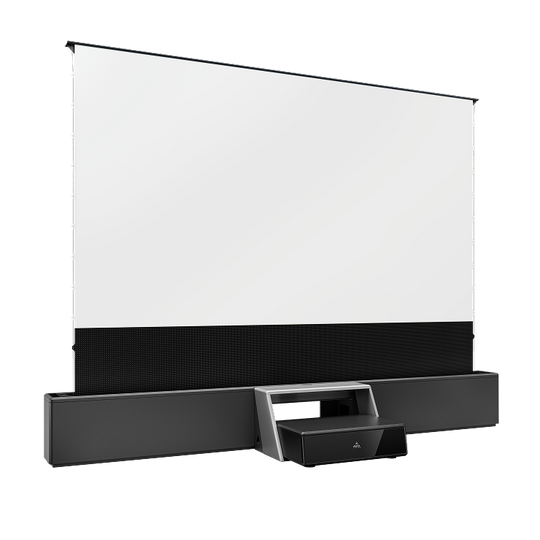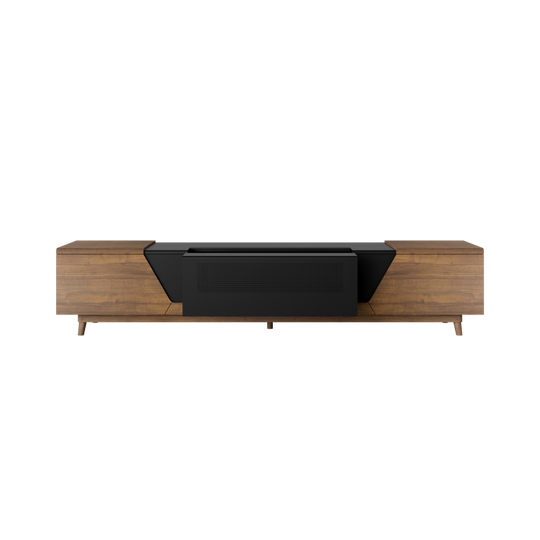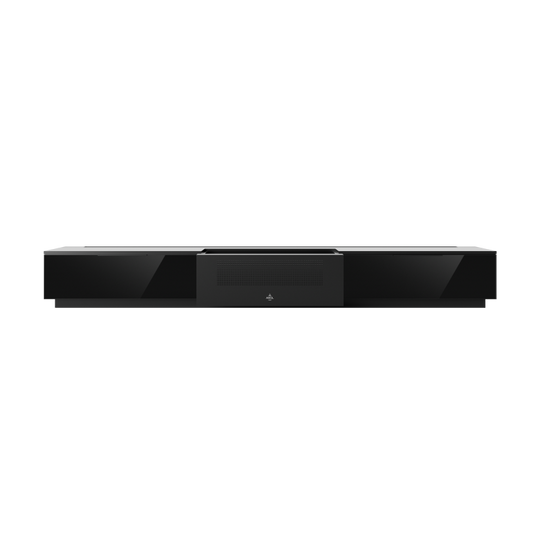Home entertainment is always evolving. Gone are the days of watching entertainment on traditional LED or LCD TVs. These days, newer and better TV technologies are arising, including the likes of Laster TV and OLED TVs. Both types offer impressive features and unique advantages, making them the most in-demand TV platforms. But which one should you choose?
Understanding the differences between laser TV vs. OLED TV is essential for making an informed decision so that you can choose the one that perfectly aligns with your home entertainment needs.
What is a Laser TV?
Laser TV is the latest TV technology that has revolutionized home entertainment. It is essentially a laser projector that uses a laser to project images on a screen. Laser TVs are renowned for their large screen sizes, ranging up to 150 inches or more, and displaying a vibrant and vivid image quality.
A laser projector such as the AWOL Vision 4K 3D Triple Laser Projector LTV-3500 Pro is an ultra-short throw projector that combines an intense laser-powered light source with a DLP chip or LCD panel to produce sharp and vivid images. It can be placed a few inches from the screen and doesn't need to be ceiling mounted.

Considering its features, a laser TV is known for its exceptional brightness. Thanks to laser light projection, laser TV displays intensely bright images, making it suitable for well-lit rooms. This helps you watch your favorite shows during the daytime with plenty of ambient light.
Since a laser TV is a UST projector, it allows flexibility in terms of placement options, making it suitable for compact spaces.
What is OLED?
OLED stands for Organic Light Emitting Diode, meaning it creates its own light source, unlike traditional TVs that use a backlight to create pixels. Each pixel in an OLED TV lights itself which results in a sharp contrast. Since the OLED TV doesn’t use backlight, it makes the colors stand out and appear distinct and detailed. This means that when an OLED pixel is turned off, it is completely black, which allows for infinite contrast ratios and deep, true blacks.

OLED TVs deliver a much wider viewing angle, making them suitable for movie nights with the whole family.
Laser TV vs. OLED: Picture Quality
Let’s compare laser projector vs oled TV and see how they differ. When it comes to contrast ratio, an OLED TV takes the lead as it offers an infinite contrast ratio compared to a contrast ratio of 2200:1 of laser projectors. This is due to the self-illuminating pixels of the OLED TV that don’t use backlight to deliver an impressive contrast.
Regarding color accuracy, Laser TVS are the best as they use laser light to produce a wide color gamut. Thanks to laser light precision, the colors are vivid and true to life. OLED TVs also excel in color accuracy due to the self-illuminating feature of the pixels. This results in extremely bright colors, with deep saturation.
When it comes to brightness, the laser TVs take the lead, making them suitable for daylight conditions. In contrast, OLED TVs are suitable for dimly lit rooms where their superior contrast ratio comes into action.
Laser Projector vs. OLED: Viewing Experience
The next aspect is the viewing experience and the laser projectors clearly take the lead. They are known for their impressive wide angles with a screen size ranging from 100-150 inches. They offer a 3D experience on a huge screen, creating a truly immersive experience.
Also, the image quality doesn’t reduce near the curves, making laser TVs ideal for watching sports and games with a huge crowd. OLED TVs have a smaller viewing angle with the largest screen size of 97 inches. This makes them ideal in living rooms or compact spaces.
Cost and Value: Laser TV vs. OLED
When it comes to cost and long-term value for money, the laser TVs are the best as they offer a much larger screen size of up to 150 inches at a much lower price. Their price bracket is usually between $2,000 to $6,0000 with the premium models offering much advanced features. On the other hand, OLED TVs may cost $900 for a basic 65-70-inch screen size and may go up to $25,000 for a mere 97-inch screen.
Installation and Space Requirements
Discuss the usage environment: For example, OLED TVs are more suitable for living rooms, while Laser TVs are more suitable for home theaters. In offices, exhibition halls, and schools, Laser TVs are also more popular because they require less space.
Regarding ease of installation, the Laser TVs are relatively easier to install as they are ultra-short throw projectors that can be placed a few inches from the screen, simplifying installation. OLED TVs are also easier to install as they can be mounted on the wall like traditional TVs. Since many individuals are experienced with installing TVs, they may find it easier to mount the OLED TV.
Laser TVs have a wide viewing angle so they require a dedicated screen and large projection surfaces. This makes them ideal for home theater setups. Since they are UST projectors, they save space as they are placed near the screen. This aspect along with high brightness and wide viewing angles, makes them popular in settings like offices, exhibition halls, and schools.
OLED TVs have a smaller viewing angle and are generally sleek, making them convenient for living rooms or bedrooms. They can easily blend with the room’s interior, offering smooth home entertainment.
Conclusion
When comparing laser TV vs. OLED TV, it is crucial to note their differences and features. Both TV types excel in their own aspect. Laser TVs offer high brightness, wide viewing angles, and short projection distance, making them suitable for home theater setups or professional use. OLED TVs excel in contrast ratio and picture quality, making them ideal for dark rooms.
In the end, the choice between the two depends on your needs and preferences. If you prefer brightness and large screens, then consider laser TVs but if you want a sharp picture quality, go for OLED TVs.

